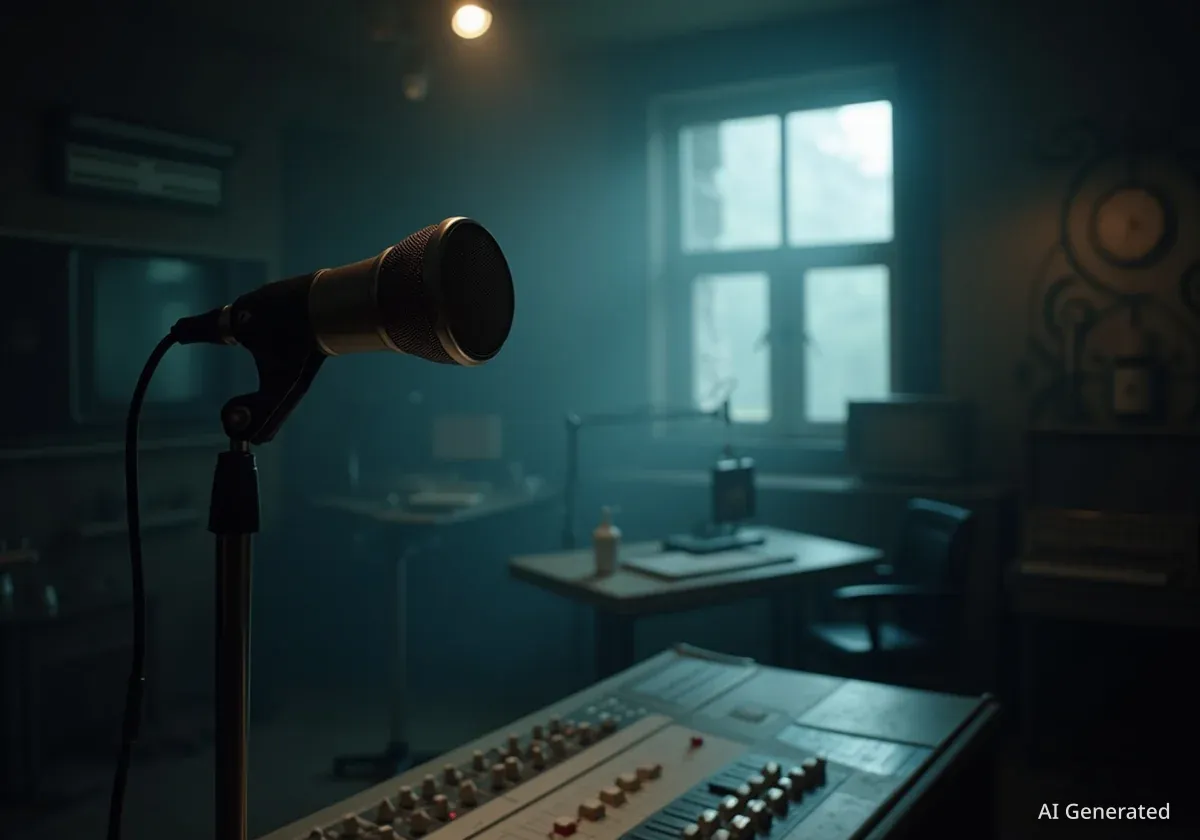WGTZ, widely known as "Z-93," has returned to the Dayton, Ohio, airwaves after a hiatus of nearly two decades. The station began broadcasting again on October 2, offering a selection of music from the 1980s, 1990s, and early 2000s. This return aims to provide listeners with a nostalgic journey through popular music from these eras.
The station's comeback marks a significant event for many Dayton residents who grew up listening to Z-93. Its original run left a lasting impression on the local music scene.
Key Takeaways
- WGTZ "Z-93" returned to Dayton airwaves on October 2.
- The station plays music from the 1980s, 1990s, and early 2000s.
- Z-93 initially launched in 1984, replacing WJAI.
- It became a top-rated station in Dayton by 1990.
- The station transitioned to "Fly 92.9" in 2007 before its recent return.
Z-93's Original Launch in 1984
The journey of Z-93 began on Sunday, March 25, 1984, at noon. At this time, WJAI Radio, which played classic "nostalgia" music, transitioned its format. It became WGTZ, promising "adult contemporary hits."
This change was a direct response to market research. The research indicated that WJAI had low ratings. It also showed a clear demand in the Dayton area for a contemporary hit music station.
The newly rebranded "Z-93" aimed to attract a specific demographic. This included teens and adults aged 18 to 35 who enjoyed Top 40 and rock and roll music.
Fast Fact
Z-93 launched by playing "Eat It!" by "Weird" Al Yankovic. It then played 10,093 songs without commercials, which is approximately one month of continuous music.
Early On-Air Personalities and Growth
When WGTZ launched, most of the existing WJAI staff remained. However, a significant new addition joined the team. John King, a well-known personality from WING Radio, took on the crucial 6 to 10 a.m. weekday drive-time slot.
King later became operations manager for both WING and WJAI. His move to WGTZ marked a new chapter for the station.
- Kim Faris hosted the 10 a.m. to 2 p.m. show.
- John Robertson was on air from 2 to 6 p.m.
- Ron Scott covered the 6 to 10 p.m. slot.
- Don Shannon broadcast from 10 p.m. to 2 a.m.
- Dee Campbell handled the 2 to 6 a.m. shift.
Marita Matray served as the news reader until her departure in 1990. In the early 1990s, Gretchen Corbett hosted the "Lost '80s Lunch" show, which ran from 10 a.m. to 2 p.m. In 1996, Zannie Knigtz joined WGTZ to host the 7 p.m. to midnight show.
In 2000, station officials announced that Kim Faris would leave her morning show role to become the station's PR coordinator. However, this decision was quickly reversed, allowing Faris to continue her on-air presence. Over the years, the morning show featured several co-hosts, including Sean Roberts, Alan Kaye, Dr. Dave, Joe Mama, Jeff Wicker, Jack Pohl, Rob Haney, and Jim Wheeler.
Achieving Top Ratings
By 1990, WGTZ had established itself as a leading radio station in Dayton. It attracted 11 percent of local listeners, making it a chart-topper in the market.
"We’re on top again because we execute what we say we do quite well," said David Leonard, WGTZ’s vice president and general manager at the time. "We’re playing music that’s popular ... music a lot of people are buying and listening to."
This success indicated the station's ability to connect with its target audience. It consistently delivered popular music that resonated with a large segment of the Dayton community.
Radio Landscape in the 1990s
During the 1990s, local radio stations like Z-93 played a central role in community entertainment and music discovery. Before the widespread adoption of internet streaming, terrestrial radio was a primary source for new music and local information.
Noteworthy Promotions and Stunts
Z-93 was also known for its memorable promotions and humorous stunts. In 1992, some billboards caused controversy. Complaints from a Beavercreek church led to the removal of several Z-93 billboards.
These billboards stated, "Beavercreek’s Social Action Committee has declared Z-93 morally unsafe - Erlene Hummer, vice chairman." The church group also encouraged advertisers to boycott the station.
Other notable promotions included:
- "Win a Private Eye": A local woman won the services of a private investigator. Station officials reported that the investigator discovered her boyfriend was unfaithful.
- "The Breeder’s Cup": Married couples competed for prizes. The goal was to be the first to achieve a positive pregnancy test.
- The station funded an engaged couple's decision to cancel their wedding plans. Instead, they eloped to Las Vegas and married on Valentine’s Day. This promotion even received coverage in The Wall Street Journal.
These events showcased Z-93's willingness to engage with its audience in unconventional ways, often blending humor with community interaction.
Transition to Fly 92.9 and Format Change
After 23 years as a Top 40 station, Z-93 underwent a significant change in November 2007. It rebranded as "Fly 92.9" and switched its format to "Variety Hits," also known as "Jack" radio. This new format played songs from various genres and time periods.
The station's new slogan became "playing what we want." This shift aimed to attract a broader, older audience. It also sought to reduce direct competition with "Hot 102.9."
The change was partly a response to evolving listener habits. Radio audiences, especially young rock music fans, began moving towards streaming audio and MP3 players like iPods. Internet radio stations and satellite radio were also emerging platforms, taking market share from traditional broadcasters.
The format switch proved beneficial for the station's ratings. Before the change, WGTZ had dropped to ninth place in market share. A few months after becoming Fly 92.9, its market share improved, jumping to the second position.
The Return of Z-93
The recent return of WGTZ as "Z-93" marks a full-circle moment for the Dayton radio market. By bringing back the familiar branding and music from the 80s, 90s, and early 2000s, the station aims to tap into a strong sense of nostalgia among listeners.
This strategy reflects a trend in media where beloved brands and formats are revitalized to reconnect with an established audience. The station's focus on specific decades caters to those who grew up with its original programming.
The re-launch provides a fresh opportunity for Z-93 to carve out its niche in today's diverse audio landscape. It leverages a proven track record of popularity and community engagement from its past.
Listeners can now once again enjoy the sounds that defined their youth, reinforcing the cultural impact Z-93 had, and continues to have, in the Dayton area.




